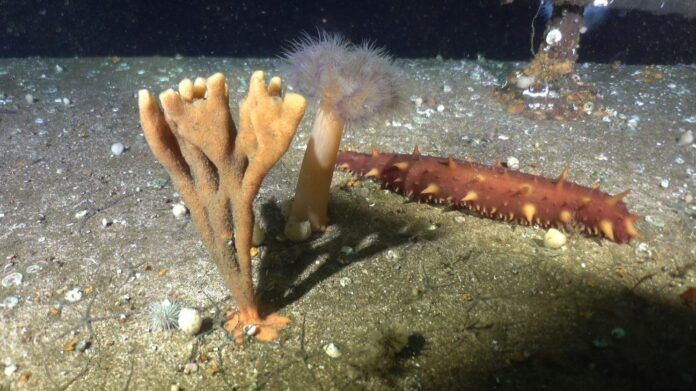Artificial reefs off the coasts of Campbell River and Powell River are gaining attention as new habitats and solutions to recycling old ships.
Beginning in 1989, with a group of divers wanting to sink ships to protect marine life and bring tourists, the Artificial Reef Society of British Columbia now has nine ships in the water off of Vancouver Island, the Sunshine Coast and Lower Mainland.
The boats are selected based on a number of criteria. Vice president Rick Wall says the boats need to be over 30 metres long, be made of steel and have to be checked by an environmental inspector before they can be put in the ocean.
“Our projects are being guided under very strict federal environmental regulations,” said Wall. “Once we get our ship, we will clean it to meet environmental standards. We don’t just dump things into the ocean.
“They have to be approved by Environment Canada, Transport Canada, and Fisheries and Oceans.”
Wall adds a complex structure is also desirable to help attract oceanic life to the boat.
Once clean and approved to be sunk, certain holes are cut into the boat so it will take on water. Positioning is considered, and they try to find an “underwater desert” that has been damaged by human contact, like logging or other industry.
“The idea is to put it onto a sandy ocean floor and keep it upright as much as possible,” said Wall.
Communications director Kiersten Enemark says the transformation from bareboat to the beginnings of the reef takes a very short time.
“Just before it goes down, it’s a very bare-bones ship floating on the ocean,” said Enemark. “Yet, it’s ironic that once it does land in the ocean it really does start its second life as a reef.
“The ships become so vibrant and so beautiful and just teaming with life.”
Wall adds the whole food chain starts getting recreated, from shrimp right to octopi, rockfish and lingcod.
The process does create waste when the ships are getting cleaned, with hydraulics, fuel, and other metals needing to be removed. However, the society says the overall disposal of the boat has a lower carbon footprint.
“We’re not looking at replacing shipbreaking, we’re looking at this being another option people can look at,” said Wall. “We don’t have to cut up the ship to its last pound of steel so that carbon footprint is in the cutting gases [and] transportation costs.”
The society is looking to more reefing projects in the future, with the motivation to give the boats a new life and give other creatures a place to call home.
“I personally find that having a ship with a second life is much preferable than me shaving with it,” said Wall. “I don’t want to see ships being turned into razor blades if possible.
More information about the Artificial Reef Society and its future projects can be found on its website.




